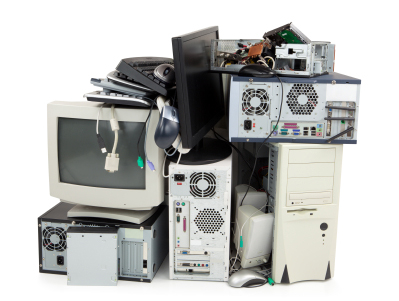
In 2005 the EU produced between 8.3 and 9.1 million tonnes of WEEE and is expected to produce up to 12.3 million tonnes by 2020. To address this, the new WEEE Directive
2012/19/EU (
link)
has set collection targets of 85% of the quantity of WEEE generated in each Me mber State to help ensure that about 10 million tonnes per year will be collected from 2019 onwards.
The Directive sets out that it should be
the producers of the equipment who finance the collection, treatment and environmentally sound disposal of WEEE. As such, it applies the principle of extended producer responsibility by making the manufacturer or vendor responsible for the entire life - cycle of the product. However, it is still unclear how much of the financial burden is shifted from producers on to consumers.
Marinella Favot (Yale University -
link) and Alfio Marini (University of Udine -
link) conducted a study on the
price of electric and eletronic equipment after the introduction of the WEEE Direrctive.
This study analyses price variation across 972 categories of products in 27 Member States after the introduction of the WEEE Directive. The Netherlands, Belgium and Sweden were not included because they had introduced national legislation on this subject before the Directive was issued. The researchers considered electrical and electronic equipment, covering a range of products and appliances.
The analysis used data from Eurostat on the price - level index, which allows direct comparison between countries. Since the year of implementation of the WEEE Directive varies amongst Member States, the average prices for electrical and electronic equipment were compared before and after the implementation for each country.
The price increase after implementation was then averaged across the Member States.

Price increase of electric and eletronic equipment after the introduction of the WEEE Direrctive - © MyChemicalMonitoring
Overall, audiovisual equipment such as TVs and radios experienced the biggest price increase after implementation of the WEEE Directive, at 3.88% , and photographic equipment , such as cameras , experienced a similar increase at 3.69%. Electric appliances for personal care had the smallest increase at 0.71%, while large household appliances increased by 1.29% and smaller household appliances by 1.26%. For information processing equipment, such as computers, there was a price increase of 2.31%. The average increase across all six categories after implementation was 2.19%.
The results of the research provide a valuable first step to assessing who is ultimately bearing the burden of dealing with e-waste. However,
the researchers concede the study does not investigate whether costs are totally or partial ly shifted to consumers.
Related Links:
- Source document: European Commission DG Environment News Alert
Service(Issue 374). Edited by SCU, The University of the West of England, Bristol
- Study: Journal of Industrial Ecology "A Statistical Analysis of Prices of Electrical and Electronic Equipment after the Introduction of the WEEE Directive"
- WEEE Directive 2012/19/EU
 In 2005 the EU produced between 8.3 and 9.1 million tonnes of WEEE and is expected to produce up to 12.3 million tonnes by 2020. To address this, the new WEEE Directive 2012/19/EU (link) has set collection targets of 85% of the quantity of WEEE generated in each Me mber State to help ensure that about 10 million tonnes per year will be collected from 2019 onwards.
In 2005 the EU produced between 8.3 and 9.1 million tonnes of WEEE and is expected to produce up to 12.3 million tonnes by 2020. To address this, the new WEEE Directive 2012/19/EU (link) has set collection targets of 85% of the quantity of WEEE generated in each Me mber State to help ensure that about 10 million tonnes per year will be collected from 2019 onwards.
